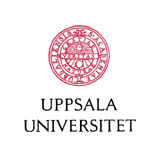|
Key Solutions for a Massive MIMO FDD System
Wolfgang Zirwas
Nokia Bell Labs,
Mikael Sternad
, Uppsala University and
Rikke Apelfröjd
, Uppsala University.
2017 IEEE 28th Annual International Symposium on Personal,
Indoor and Mobile Radio Communications (PIMRC)
, Montreal, October 2017.
Paper In Pdf
Presentation slides
(with additional simulation results)
- Abstract:
-
The ongoing standardization within 3GPP
for the so called new radio (NR) system has identified
massive multiple-input multiple output (MIMO) transmission,
also called full dimension MIMO, as one of the
main contributors to higher spectral efficiency for the
mobile broadband case. In particular for radio frequencies
below 6 GHz, channel estimation has to be supported in
frequency division duplex (FDD) as well as time division
duplex (TDD) operation.
In TDD we may obtain downlink
channels by estimating uplink channels, assuming reciprocity.
For FDD, codebook based design as well as some
type of explicit feedback is under discussion. Separately,
there are also ongoing discussions of the question if
massive MIMO in combination with FDD is a reasonable
choice at all.
Here we highlight some of our recent results obtained
within several 5G research projects. To our understanding
they overcome some of the inherent limitations of massive
MIMO for FDD.
As indicated by simulations, the resulting
concept enables a grid of beam (GoB) and reference
signal design with a reasonable downlink reference signal
overhead of around 10 percent, together with reasonable
feedback overhead of several hundred kbit/s per UE. Such
a design attains around 90 percent of the massive MIMO
system performance with ideal channel state information.
- Related publications:
-
Paper at IEEE Trans. on Communications 2019 on
Joint reference signal design and
Kalman/Wiener channel estimation for FDD Massive MIMO.
-
Coded non-orthogonal downlink CSI reference signals,
Original paper proposing this concept at WSA 2016.
-
IEEE Communications Magazine 2014
on the role
of small cells, coordinated multi-point and massive
MIMO in 5G.
-
PhD Thesis of Rikke Apelfröjd, April 2018.
|
Main
entry in list of publications
|
4G and 5G wireless research
|
This material is posted here with permission of the IEEE. Such permission of the IEEE does not in any way imply IEEE endorsement of any of Uppsala University's products or services. Internal or personal use of this material is permitted. However, permission to reprint/republish this material for advertising or promotional purposes or for creating new collective works for resale or redistribution must be obtained from the IEEE by writing to [email protected].
By choosing to view this document, you agree to all provisions of the copyright laws protecting it.
|

